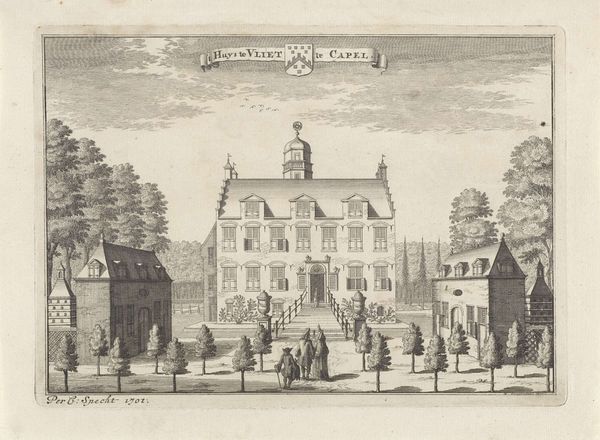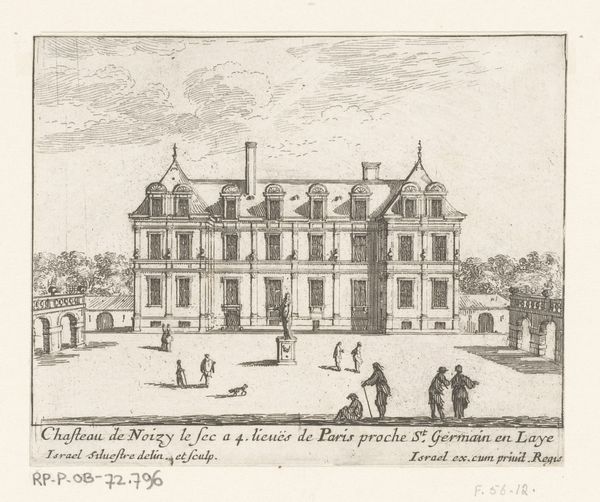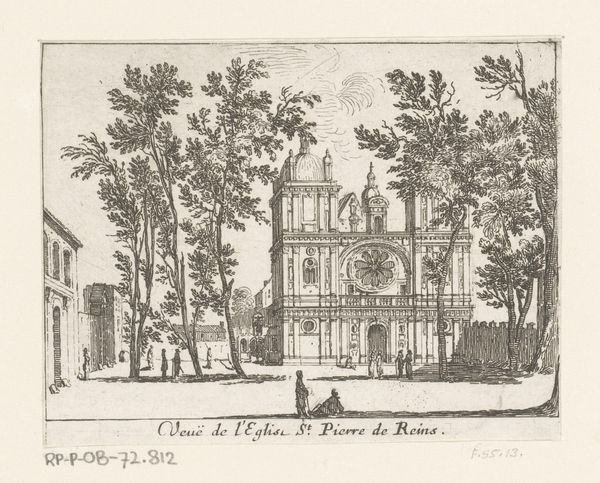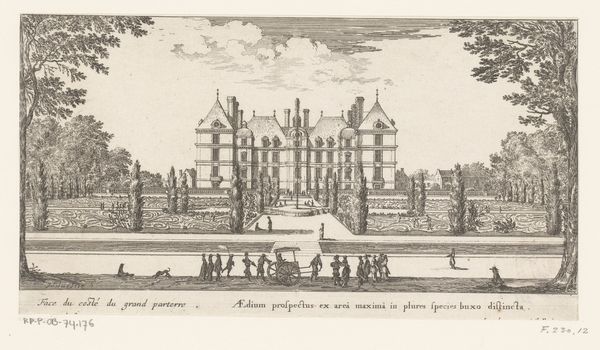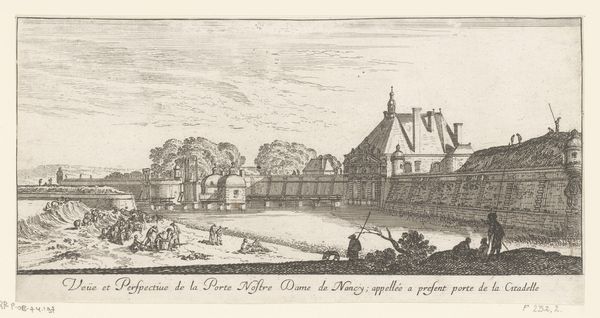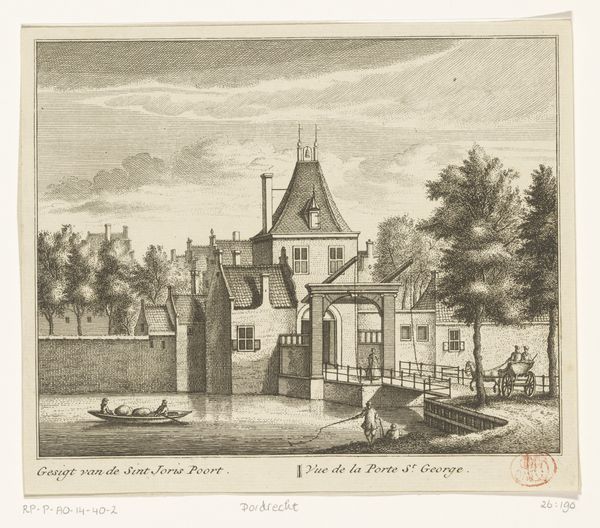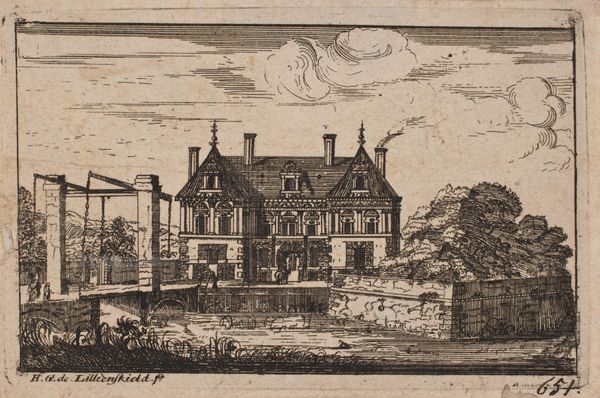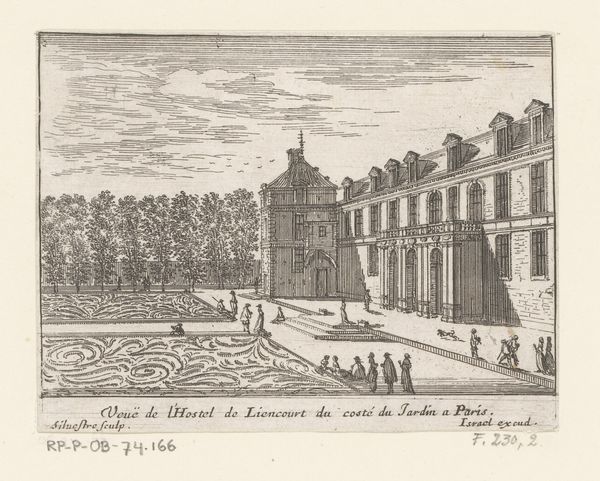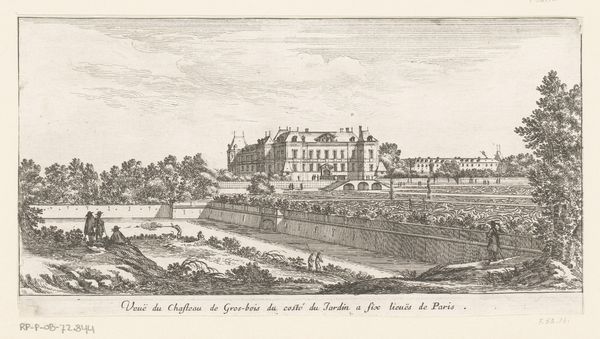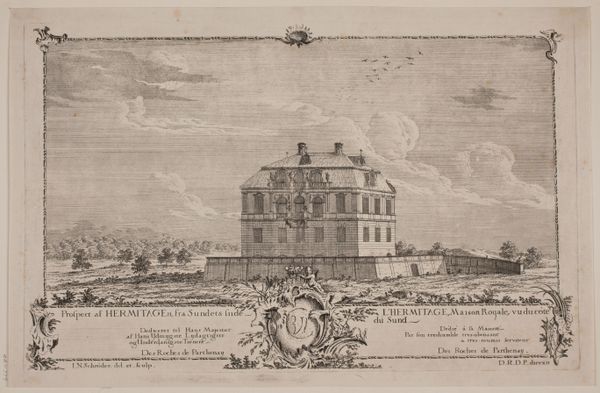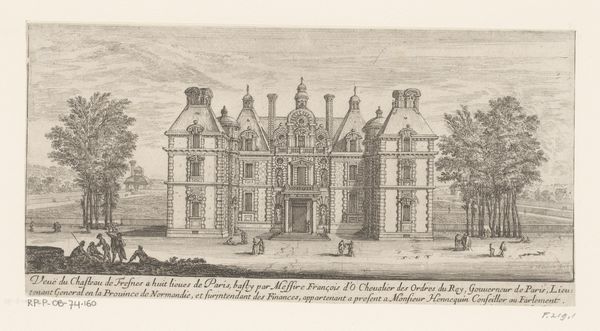
print, etching
#
baroque
# print
#
etching
#
landscape
#
history-painting
Copyright: National Gallery of Art: CC0 1.0
Editor: Here we have Israel Silvestre’s "Le Grotte de Meudon," an etching from 1655. It’s a highly structured landscape, almost stage-like. The building is so formal, and the people so small. What do you see in this piece? Curator: The grotto is depicted with the grandeur of an idealized vision, certainly divorced from the realities faced by many during this era. Do you see how the artist presents this space not merely as a recreational retreat but almost as a demonstration of power and control over nature? Silvestre presents us with this very curated depiction during a time of massive social inequalities. Editor: Yes, the contrast between the controlled architecture and the suggestion of nature really emphasizes that power dynamic. So, it's not just a pretty picture, it's making a statement about social control? Curator: Precisely. Consider how access to spaces like these would have been highly restricted. These constructed "natural" environments served to reinforce a social hierarchy, accessible only to a privileged few while many others were landless or struggling with poor access to resources. This depiction almost erases that inequity, doesn’t it? Editor: I didn’t think about it that way before, but it really changes the feeling. The image isn't just about beauty; it's a reflection of larger societal inequalities and controlled access to resources and privilege. Curator: Right, and reflecting on the intended audience adds another dimension. Who was meant to view this, and what were they meant to feel? Considering these aspects transforms our perception of a seemingly straightforward landscape. Editor: I've definitely learned a lot. I didn't realize an etching could be so layered with social and historical commentary. Curator: It's a reminder that art is always in conversation with its context. Understanding that conversation unveils its deeper meanings.
Comments
No comments
Be the first to comment and join the conversation on the ultimate creative platform.
